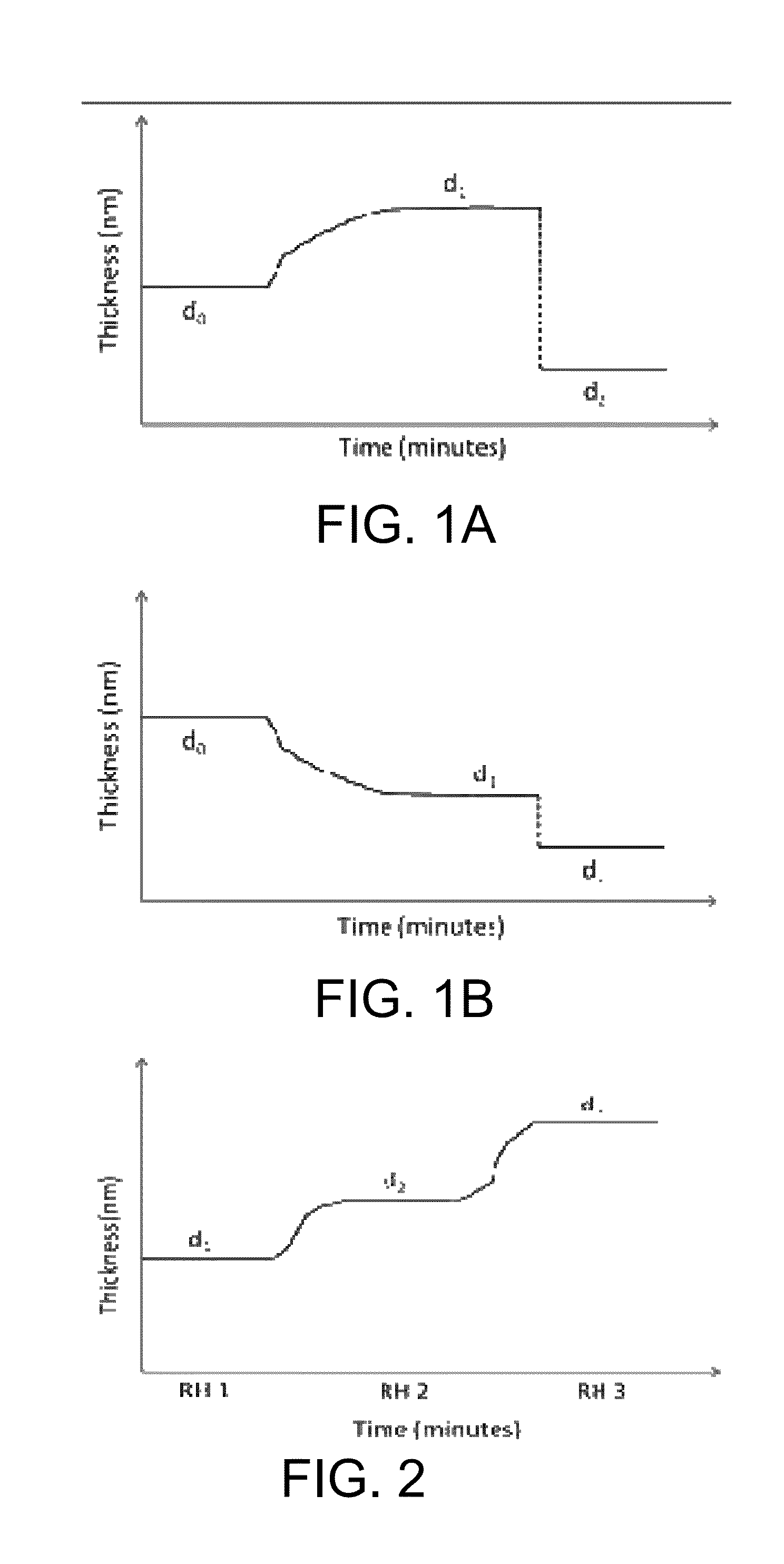Methods of measuring a characteristic of a creping adhesive film and methods of modifying the creping adhesive film
a technology of creping adhesive and characteristic, applied in the direction of weighing by absorbing component, using sonic/ultrasonic/infrasonic waves, and analyzing fluids using sonic/ultrasonic/infrasonic waves, etc., can solve the problem of web wrinkles or puckers, affecting the adhesion of the sheet, and reducing the efficiency of the creping process
- Summary
- Abstract
- Description
- Claims
- Application Information
AI Technical Summary
Problems solved by technology
Method used
Image
Examples
examples
Experimental Data
[0053]Creping Adhesives:
[0054]Commercial polyamidoamine-epichlorohydrin resins were used in these studies, designated as Sample A, Sample B.
[0055]Conventional Tests:
[0056]Film insolubility and rewettability were measured in a combined test. For each adhesive sample, an adhesive film of a fixed thickness was prepared in a beaker by drying at 90° C. for 1 hr followed by 4 hr drying at 110° C. The dry film was weighed (initial dry film weight), covered with distilled water and agitated in a shaker at room temperature. The undissolved solids were separated, weighed (wet film weight after agitation in water), dried and weighed again (dry film weight after solubilization). The Percent Insolubility and Rewet Ratio were calculated as follows:
Percent Insolubility=[(Dry film weight after solubilization) / (Initial dry film weight)]×100
Rewet Ratio=(Wet film weight after agitation in water) / (Dry film weight after solubilization)
[0057]Film shear modulus was measured using an Anton...
PUM
| Property | Measurement | Unit |
|---|---|---|
| temperature | aaaaa | aaaaa |
| temperature | aaaaa | aaaaa |
| time | aaaaa | aaaaa |
Abstract
Description
Claims
Application Information
 Login to View More
Login to View More - R&D
- Intellectual Property
- Life Sciences
- Materials
- Tech Scout
- Unparalleled Data Quality
- Higher Quality Content
- 60% Fewer Hallucinations
Browse by: Latest US Patents, China's latest patents, Technical Efficacy Thesaurus, Application Domain, Technology Topic, Popular Technical Reports.
© 2025 PatSnap. All rights reserved.Legal|Privacy policy|Modern Slavery Act Transparency Statement|Sitemap|About US| Contact US: help@patsnap.com



